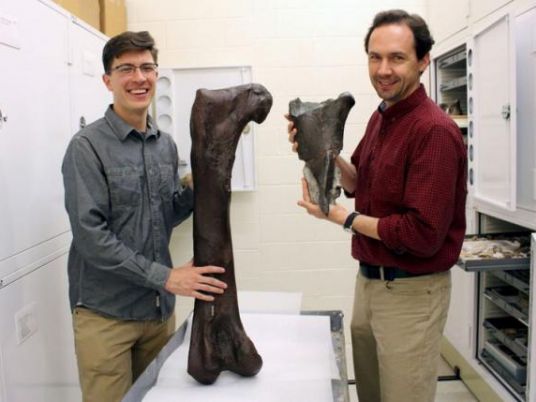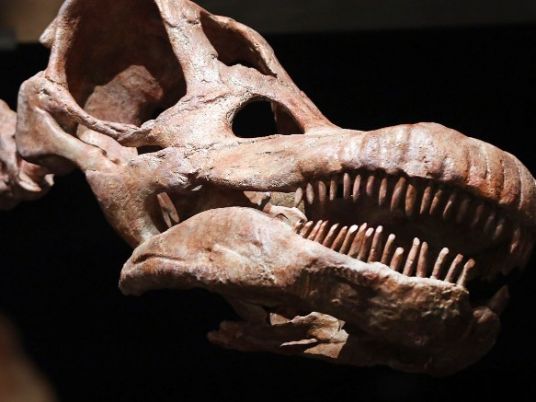
Scientists digging among coastal rocks in Washington state have found the partial left femur of a two-legged carnivorous dinosaur, a fossil believed to be about 80 million years old and the first of its kind found in the state, scientists said on Wednesday.
Researchers discovered the 16.7-inch (42.4-cm) fossil, part of a femur bone, in May 2012 while collecting ammonite fossils along the shores of Sucia Island in the San Juan Islands northwest of Seattle, the Burke Museum of Natural History and Culture said.
Paleontologists were unable to identify the dinosaur's exact species but have ascertained it is a theropod, a group that includes Velociraptor and Tyrannosaurus rex, the museum said.
The finding of a land-living animal's bone, embedded with fossils of prehistoric clams that lived in shallow water, is rare because Washington state was mostly underwater when dinosaurs lived, the museum said.
It is likely that the dinosaur died near the sea, was tossed by the waves, and eventually came to rest among the clams, the museum said.
"The fossil record of the West Coast is very spotty when compared to the rich record of the interior of North America," said University of Washington Biology graduate student Brandon Peecook, a project researcher.
The rocks that today form Sucia Island once rested farther south, possibly between present-day Baja California, in Mexico, and Northern California, and were shifted during earthquakes and other geologic forces.
Peecook and fellow researcher Christian Sidor, the museum's Curator of Vertebrate Paleontology, were able to determine the femur was from a theropod dinosaur because the bone's marrow-holding middle cavity is unique to theropods from that time.
It took three years to remove the fossil from the hard rock around it, and then identify it and compare it to dinosaur collections of other museum to help verify the find, said museum spokeswoman Andrea Godinez.
"This fossil won't win a beauty contest," Sidor said. "But fortunately it preserves enough anatomy that we were able to compare it to other dinosaurs and be confident of its identification."




